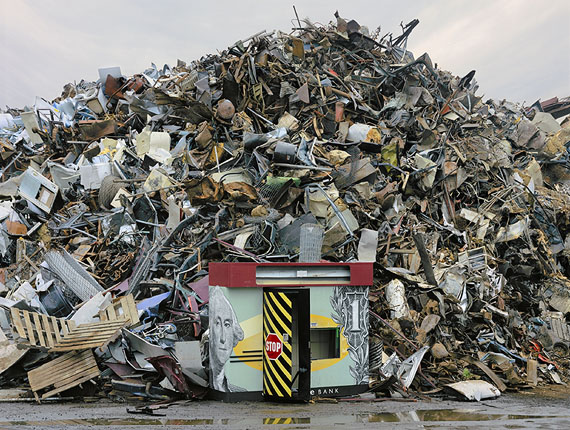
Environmentalism has never been about catastrophe. It is about alternatives, about changing course, about transforming the future
-Philip Shabecoff, Earth Rising: American Environmentalism in the 21st Century
I never thought I'd become an advocate for Mother Earth. I actually failed the only environmental course I ever took. The class was called "The Environment" and involved lengthy discussions of shifting tectonic plates. As a college freshman, I didn't care about shifting tectonic plates--I couldn't see how they were relevant to my life. To this day, when information stays in the realm of abstraction, my eyes glaze over.
A tour of a landfill that I took about a year ago, however, drove home the link between my life and the environment, at least where consumption and waste are concerned. I was surprised to see seagulls swooping through mountains of refuse in landlocked Kansas. From the car, I could detect a faint smell of garbage. Once I got out, the stinking piles of plastic bottles, disposable diapers, newspapers, grass clippings and the like forced me to consider the extraordinary journeys of my everyday things. They might come to this landfill to die, but how were they born, and where had they lived? How many hands and machines touched my coffee before it met my cup? How much water did it take to make the bottle that held my water? Would my steel cans be reincarnated as cars?
As an environmental journalist, I aim to help people make the connection between their everyday lives and the resources that support them. I'm often asked, "What's a quick and easy thing I can do to save the environment?" I admit that the question makes me cranky--we can't save our beautiful, complex, messy planet with a list called "10 Easy Ways to Go Green!" To make real progress, we have to not only change our products and behaviors but gain real context for those changes, and real reverence for the incredible life cycles of the things we use.
Good: Buying compact fluorescent bulbs. Better: Having a basic understanding of energy consumption and changing bulbs.
By linking small changes to our bigger world, we can move from quick tips to deep transformation.
In this Huffington Post series, Washburn University professor Sarah Smarsh and I will use daily American routines--from reading the paper over coffee to sweating over a yoga mat--as a springboard to tangible, important information on the Stuff of Life. Water bottles and wedding rings, DVDs and diapers, office chairs and chopsticks... They all have stories, and your life is their narrator.
A couple times a week, Sarah and I will take you from the fields and laboratories where materials are created, to the factories where raw inputs are transformed into products, to the ugly resting places of the roughly five pounds of trash you create per day (The good news: Nearly a third of it gets recycled. The bad news: Less than a third of it gets recycled.). To be sure, we won't be offering tips here--just information for you to put in your pipe and maybe smoke, even pass to a friend.
In an era where a latte tastes the same in Shanghai as it does in Cheyenne, we forget that not everything can be compressed into a quick tip or a one-size-fits-all answer. Industry, technology and globalization have created access to endless goods but disconnected us from where and how our stuff is made, and where it goes after we get rid of it. This series is about re-instilling that connection. Only then can we make truly meaningful environmental choices that align with our values and are informed by the context of our everyday lives.
The first leg of our journey: Breakfast of Champions, wherein we dissect the life cycles of coffee, cigarettes and newspapers. Stay tuned.
Thanks to the University of Kansas School of Journalism & Lacey Johnston for research assistance. Photo Credit: Chris Jordan